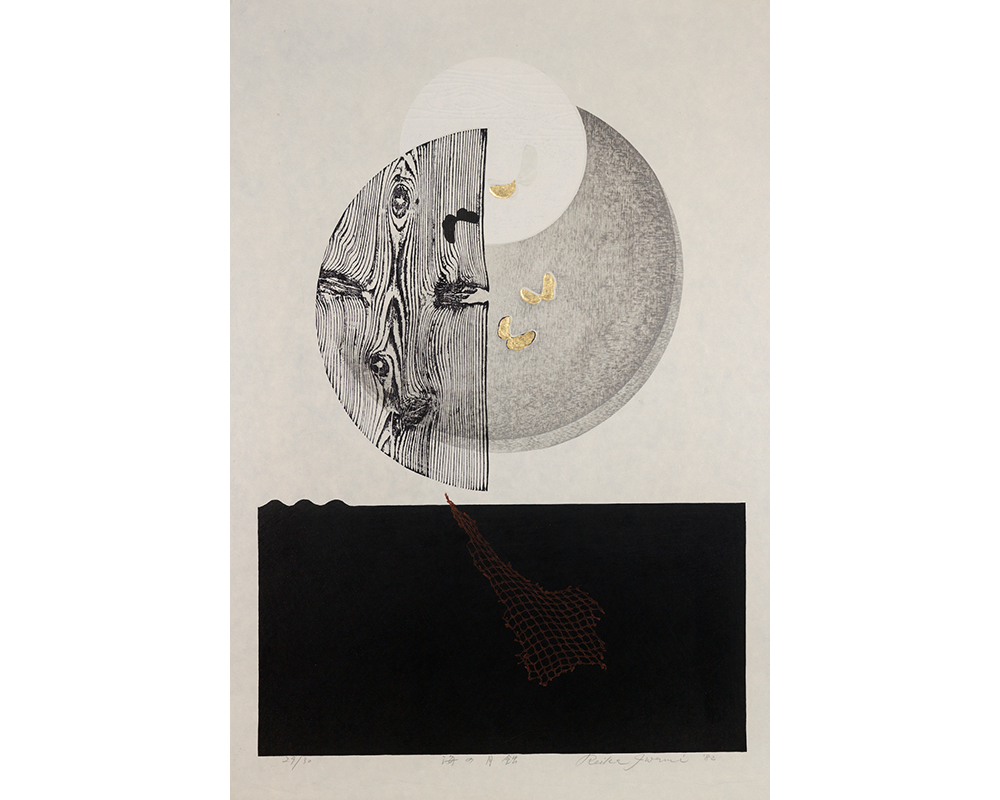
Tolman Collection: Reika Iwami
Aprile Gallant is the Senior Curator of Prints, Drawings, and Photographs at SCMA.
Gifts are the lifeblood of any Museum collection. It is exceptionally gratifying when donors make a commitment to regular gifts of works by specific artists. Not only do such gifts bolster a particular area of study within the collection, they also allow visitors a deeper look into an artist’s work and process.
This spring, SCMA was pleased to receive a gift of 50 prints by 5 different Japanese artists from The Tolman Collection, the largest publisher of contemporary editions in Japan. These gifts were made in honor of the 50th birthday of Hilary Tolman, Smith College class of 1987, and join 30 other prints made in Ms. Tolman’s honor within the past 7 years.
The five artists included in this recent gift—Shinoda Toko, Iwami Reika, Shuji Wako, Hiramitsu Takahashi, and Hasegawa Yuichi—each exemplify graphic excellence in a particular printmaking medium. As a group, these prints form a vital and useful teaching collection.
The first artist in this gift to be featured in paper + people is the woodblock artist Reika Iwami.
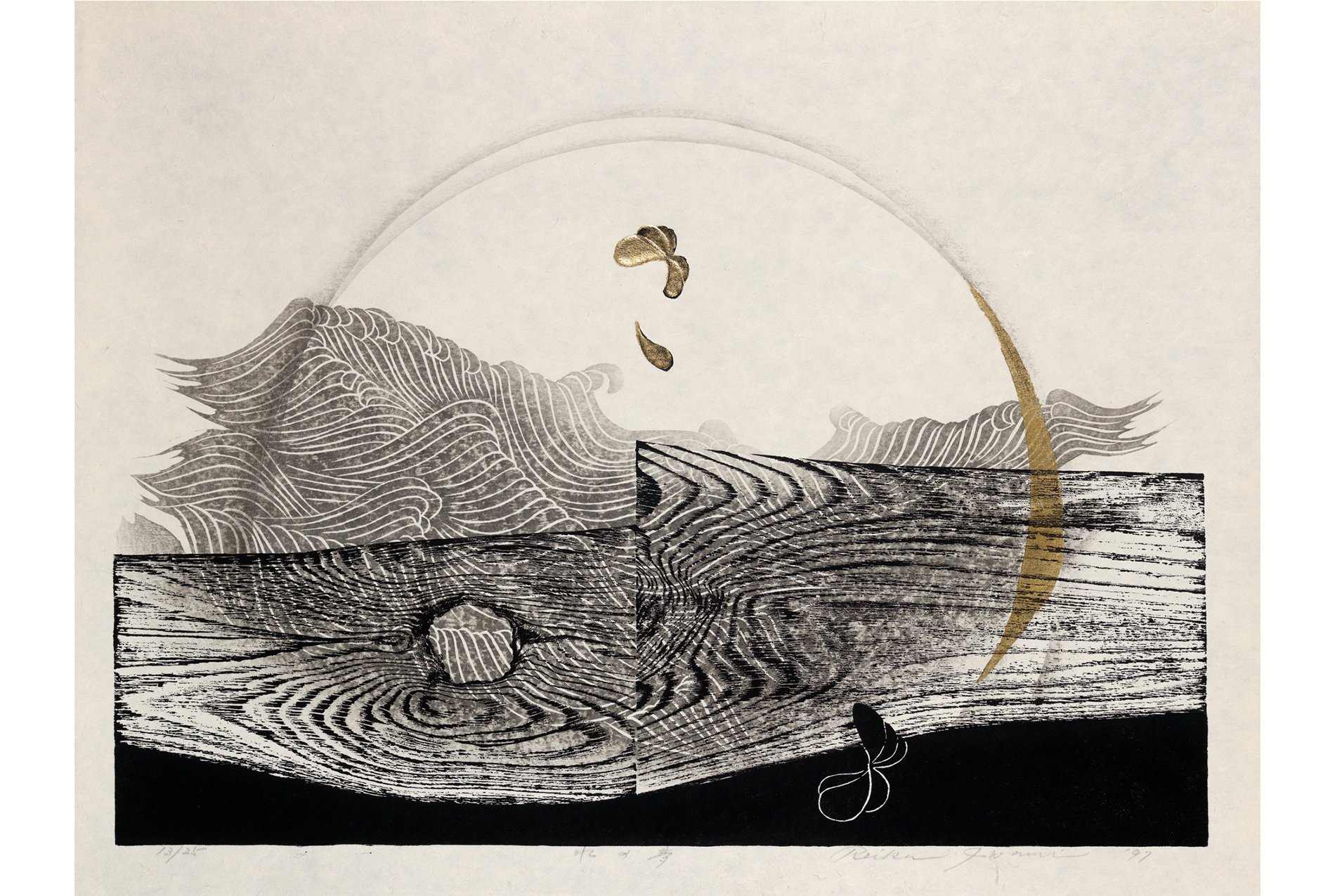
Reika Iwami. Japanese, 1927–2020. Dream of Water, 1997. Woodcut printed in black and metallic ink with embossing on medium thick, slightly textured, cream-colored paper (13/25). The Hilary Tolman, class of 1987, Collection. Gift of The Tolman Collection, Tokyo. Photography by Petegorsky/Gipe. SC 2014.12.12.
Iwami uses simple materials—ink, wood, and metal leaf—to create abstract compositions that capture the subtle qualities of nature. Using woodblocks with distinct textures as her matrices, the artist creates exquisitely crafted prints combining sensitively printed areas of black, white, and grey with blind embossing, metal leaf, mica, and handmade paper. According to collectors Mary and Norman Tolman, “Iwami’s subject is water and its flow, and her genius lies in the almost mystical ability to transmute the grain and texture of pieces of wood she has found into visual images of patterns of water.”
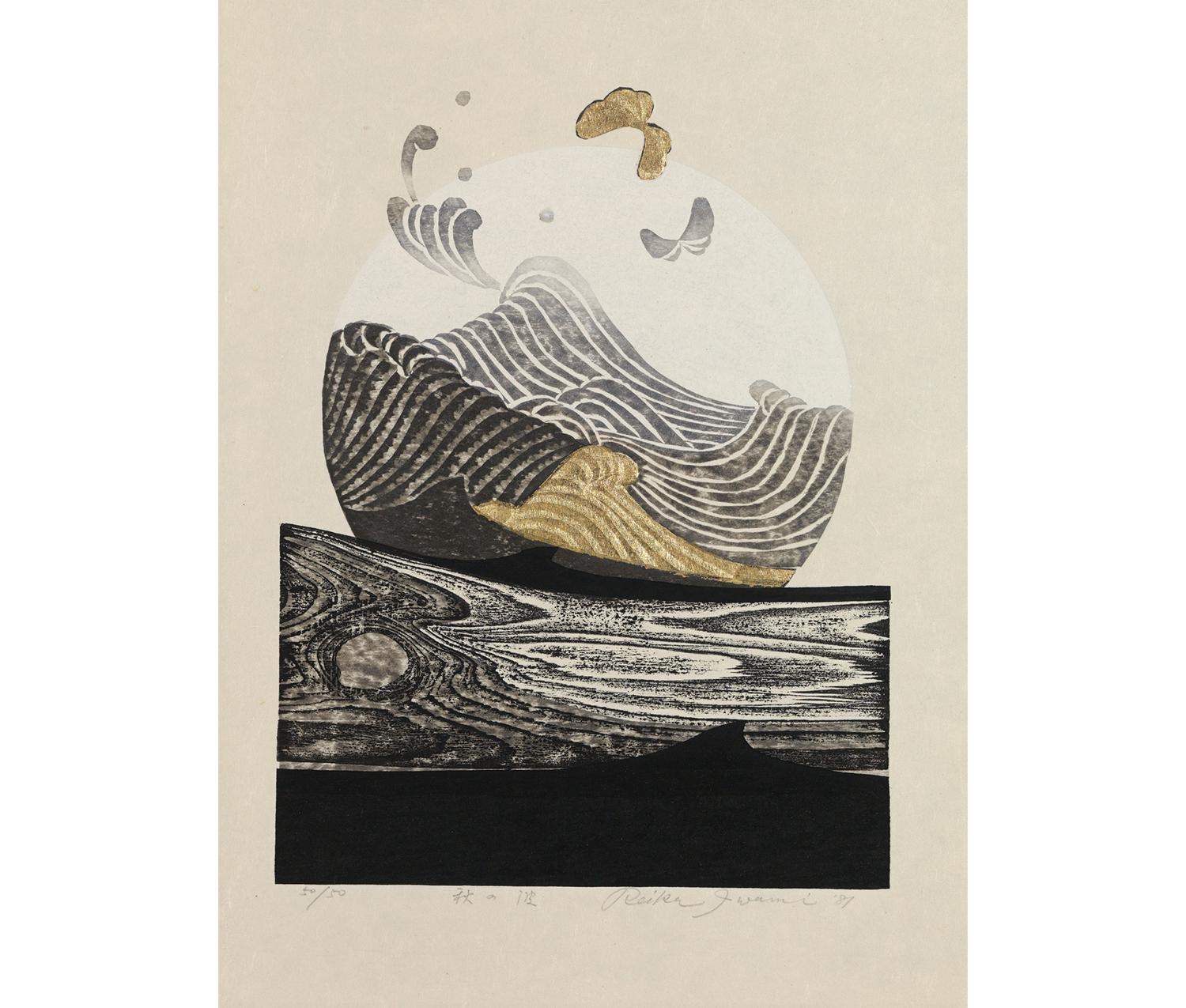
Reika Iwami. Japanese, 1927–2020. Autumn Waves, 1981. Woodcut printed in black and metallic ink with embossing on medium thick, slighly textured, cream-colored paper (50/50). The Hilary Tolman, class of 1987, Collection. Gift of The Tolman Collection, Tokyo. Photography by Petegorsky/Gipe. SC 2014.12.16.
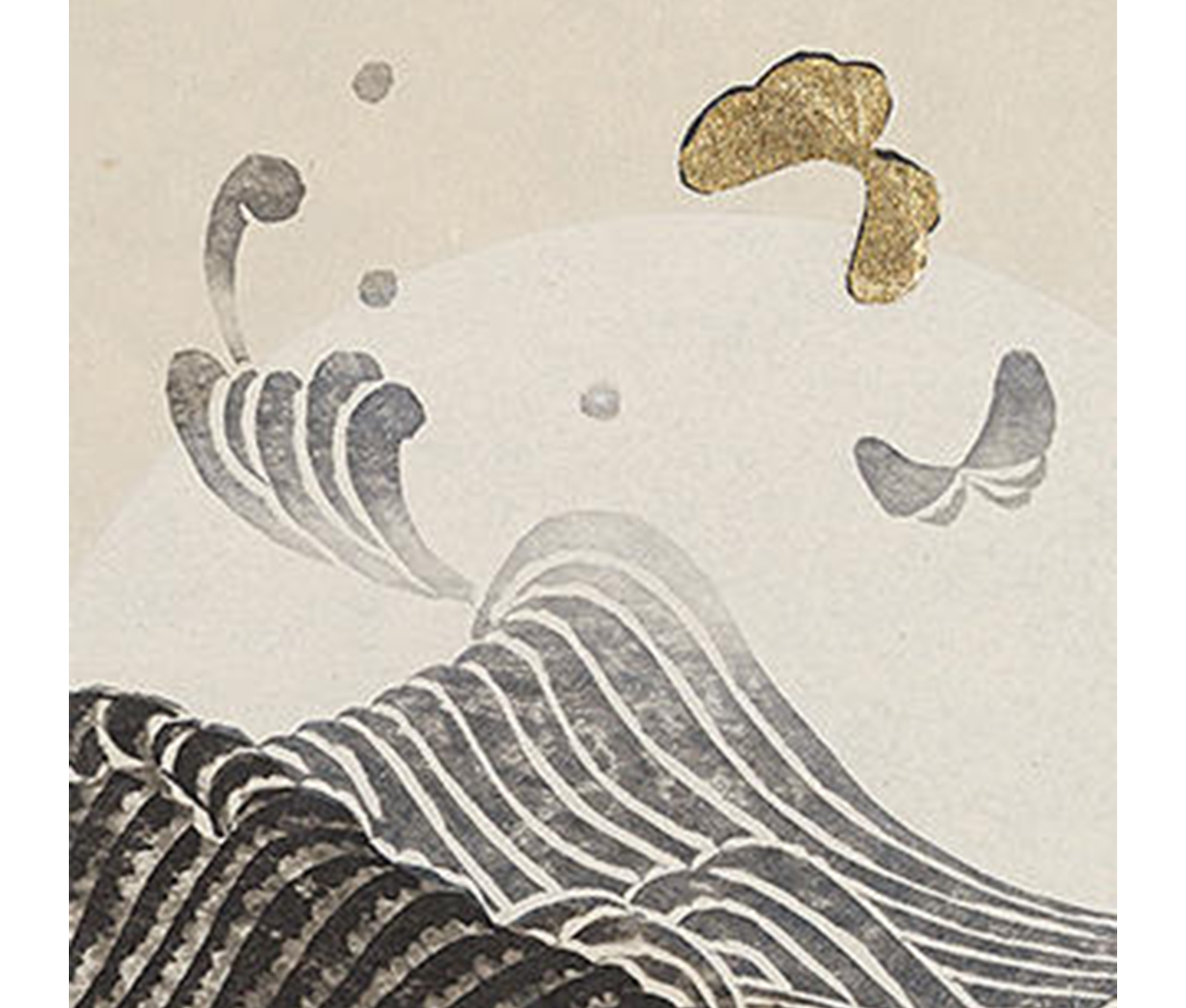
Detail from Autumn Waves
Initially trained in doll-making at Bunka Gakuen University in Tokyo, the artist refocused her creative energies on printmaking during the mid-1950s, studying with three of the most important modern printmakers in Japan: Onchi Koshiro, Sekino Jun’ichiro, and Shinagawa Takumi. In addition to making woodblock prints, Iwami is also a poet, and sees a distinct relationship between her two art forms: “Haiku is a disciplined study. It forces one to eliminate what is not necessary, and that’s why I use it as a spiritual exercise for my prints.”
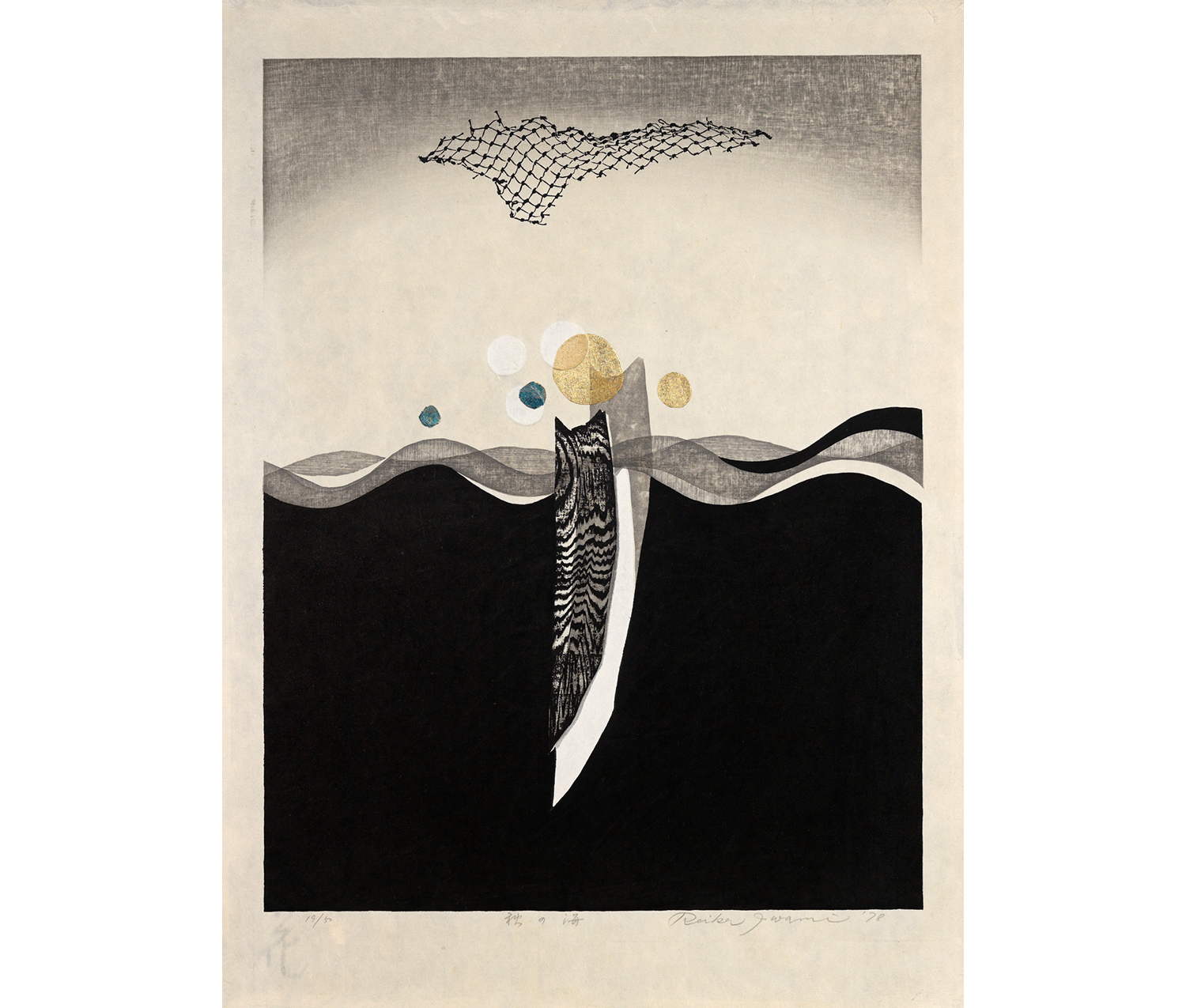
Reika Iwami. Japanese, 1927–2020. Autumn, 1978. Woodcut and collograph printed in black and metallic ink with embossing on medium thick, slightly textured, cream-colored paper (19/50). The Hilary Tolman, class of 1987, Collection. Gift of The Tolman Collection, Tokyo. Photography by Petegorsky/Gipe. SC 2014.12.11.
This new gift allows greater insight in to Iwami’s technique and imagery. Three prints as part of the recent gift, Autumn (shown above), Poem of the Sea (shown below), and Water and the Moon all feature a floating net-like form. This texture was taken directly from life: the artist used a piece of fishing net, attaching it directly to the plate where it was inked and printed as a collograph (a form of relief printing using collaged elements).
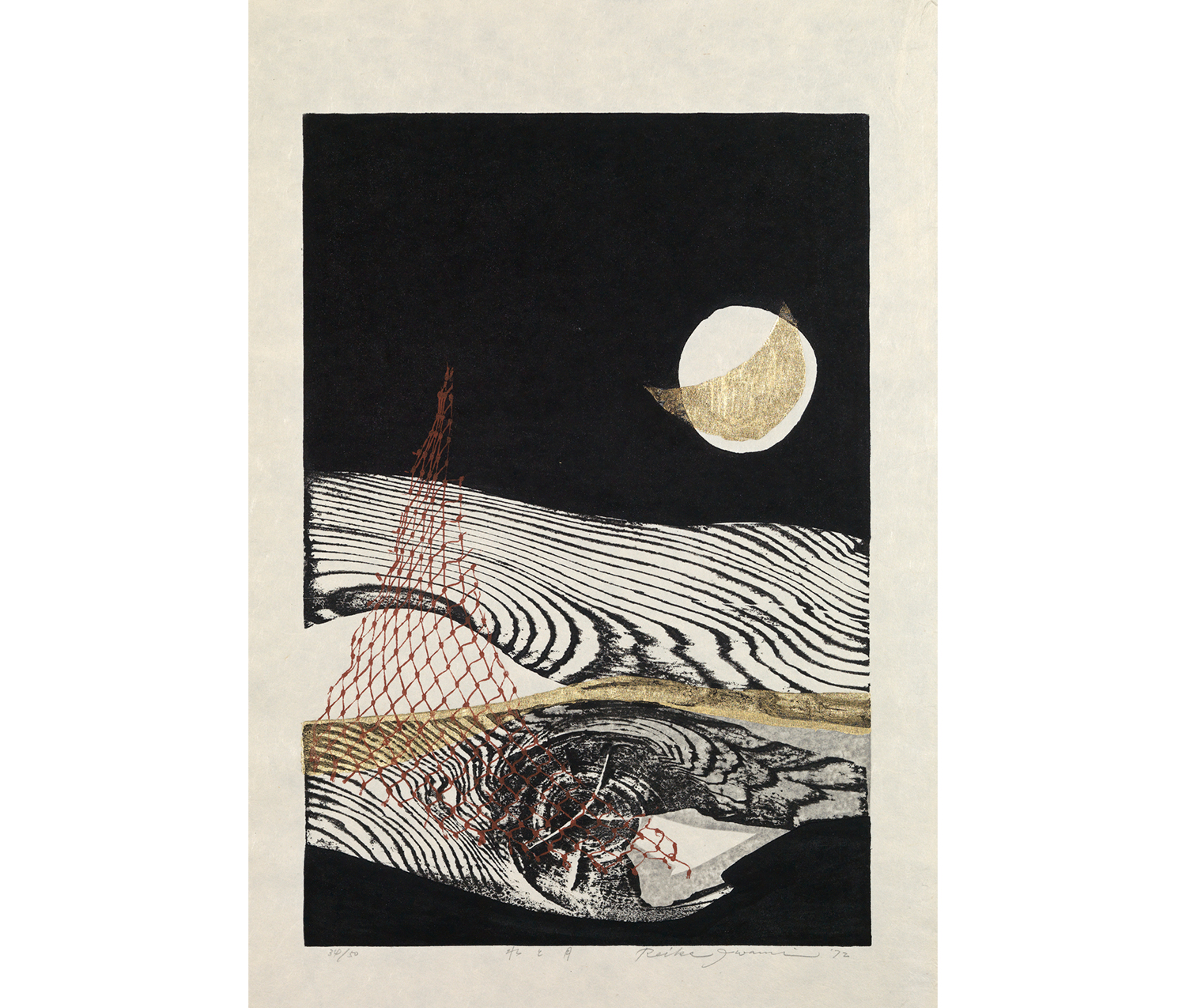
Reika Iwami. Japanese, 1927–2020. Water and the Moon, 1972. Woodcut and collograph printed in black, red, and metallic ink with embossing on medium thick, slightly textured, cream-colored paper (34/50). The Hilary Tolman, class of 1987, Collection. Gift of The Tolman Collection, Tokyo. Photography by Petegorsky/Gipe. SC 2014.12.14.
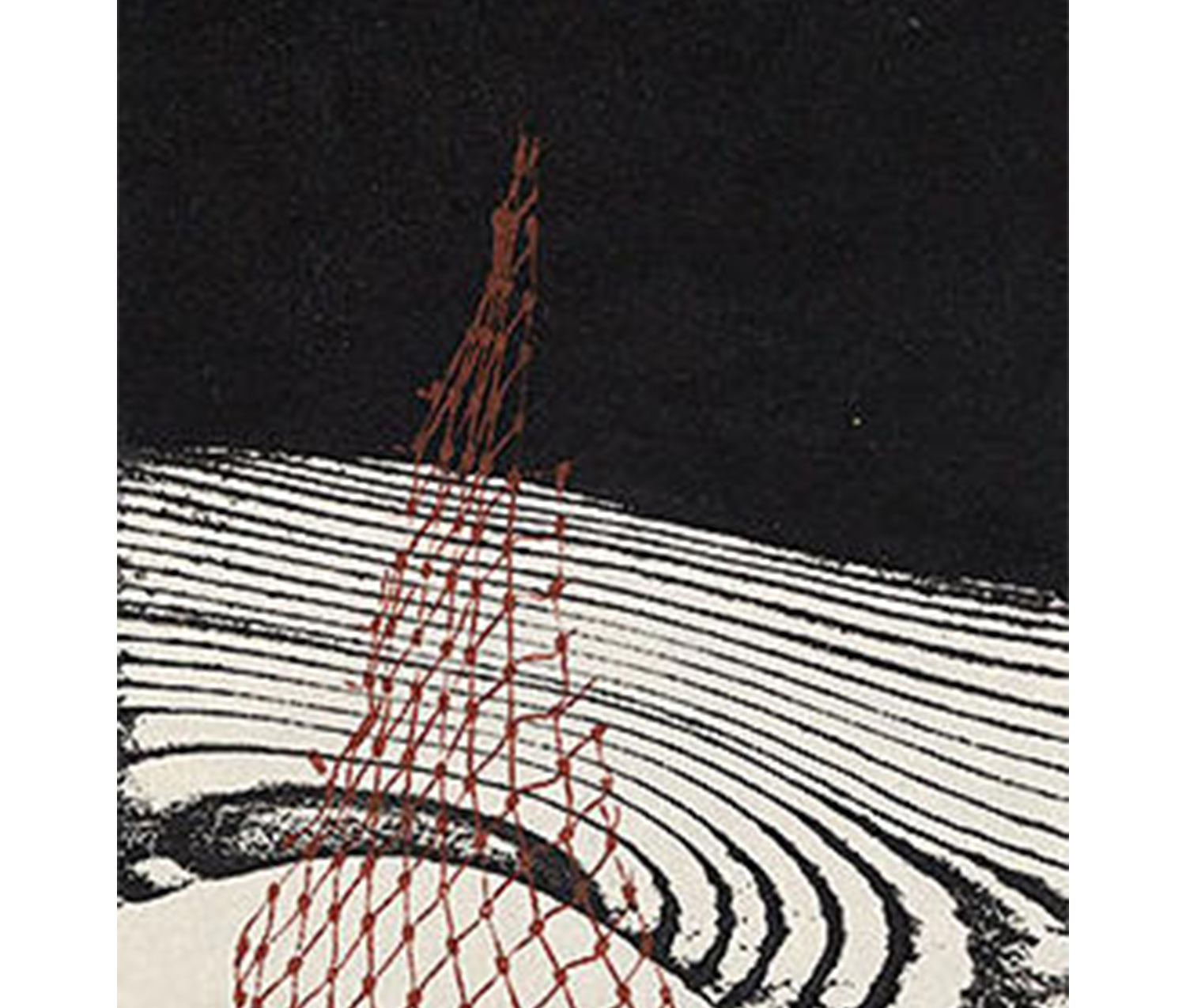
Detail from Water and the Moon
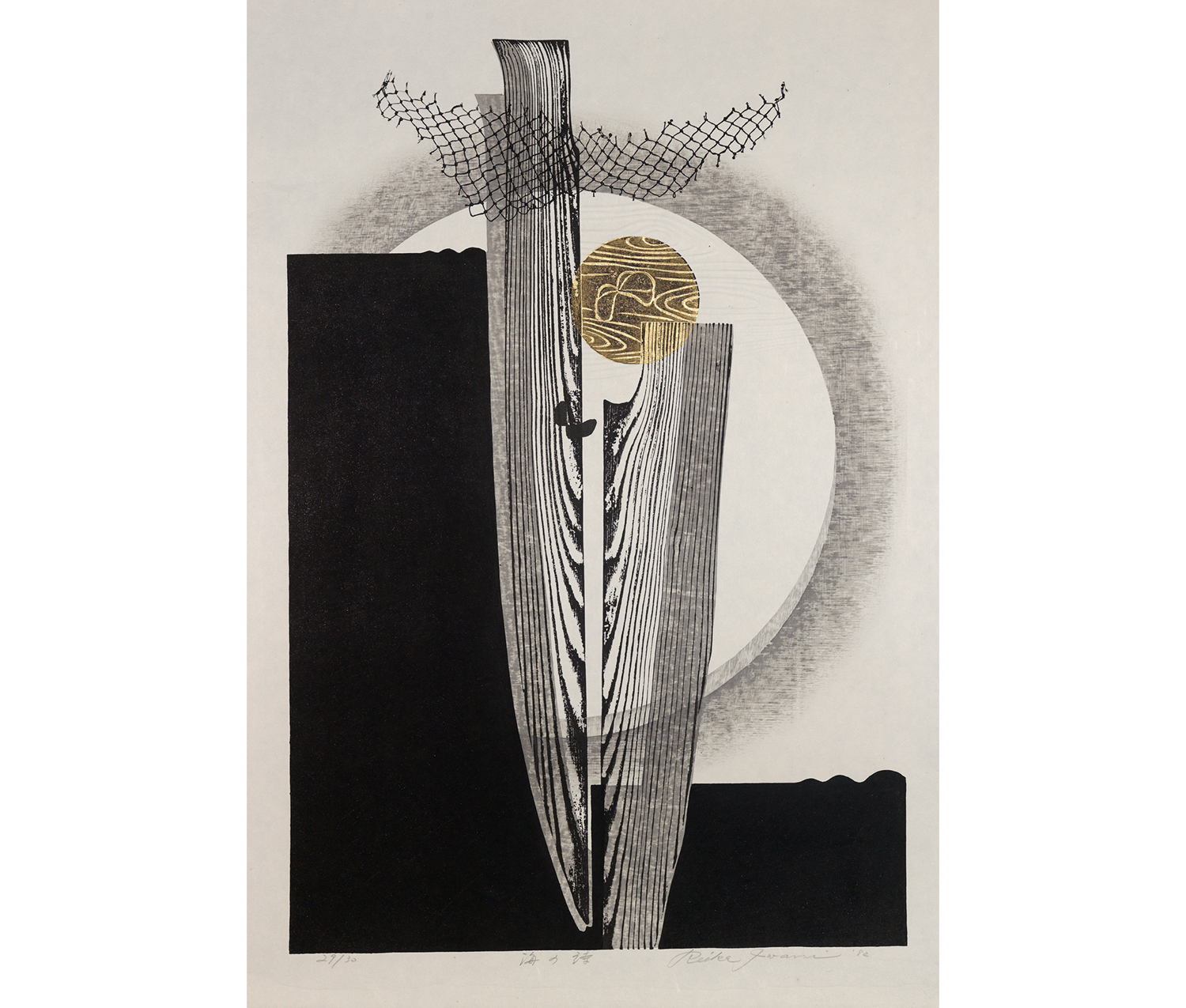
Reika Iwami. Japanese, 1927–2020. Poem of the Sea, 1982. Woodcut and collograph printed in black and metallic ink with embossing on medium thick, slightly textured, cream-colored paper (29/30). The Hilary Tolman, class of 1987, Collection. Gift of The Tolman Collection, Tokyo. Photography by Petegorsky/Gipe. SC 2014.12.17.